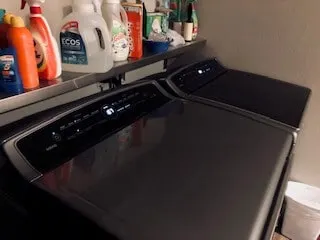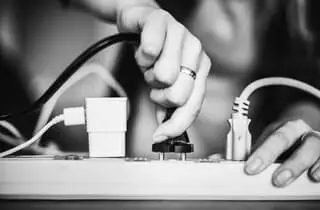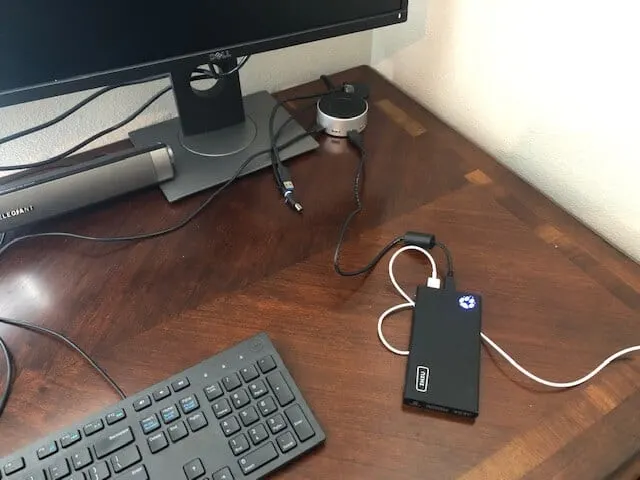I had heard about phantom energy, also called vampire energy, for some time but I never really knew if it was a real thing. And even if it was, did it really matter? I mean, how much energy could I really be losing from devices that aren’t even turned on?
If you have wondered the same thing, I’ve collected a lot of information from my research that you may find useful…maybe even surprising.
Is Phantom Energy Real? Phantom energy, also known as vampire energy, is a factual and research-validated cause of increased electrical bills. Recent studies have estimated 10%-33% of an average household’s energy bills are traceable to phantom energy. Experts predict this trend to continue as technology evolves.
The Rise Of Phantom Energy

Although previous studies estimated phantom energy waste at closer to 10%, the growing number of always-on devices in the average home has resulted in a rise in phantom energy usage. The previous studies were based on data before 2005 when the number of always-on devices in a home was much lower.
Washing machines and dishwashers are perfect examples of this trend. In the past, these appliances had mechanical buttons and dials. When your dryer was off, it was truly off. These days, however, dials and knobs have been replaced with preference-saving electronic touch panels. These panels require phantom energy to maintain user preferences.

In fact, according to a Natural Resources Defense Council (NRDC) report,
an American home now has an average of 65 devices that use electrical power. Many of these devices consume energy round the clock even when they have been turned off but remain plugged into a power source.
This is the same report that found that average phantom energy waste has grown to around 23%. You can read the full report here.
In another study, the University of Oregon found phantom loads to be even higher while studying an apartment complex. In that study, phantom loads accounted for a whopping 33% of total metered energy use(source).
Conflicting Studies
Similar to the ongoing debate over climate change, not every study agrees with the statistics. Some math wizards at Penn State did come complicated calculations and came up with 10% phantom energy use in 2017, the same percentile as was estimated back in 2005 (source).
This is not to say that they downplay the importance of phantom energy usage and

The experts and scientists can go on debating the statistics. Regardless of the percentage of energy wasted that they finally agree on, it is worth our time to hunt down these energy vampires and get them under control.
Learn All About Phantom Energy And How To Reduce Waste
I’ve written an extensive article on the realizations of phantom energy and it’s impact on homeowners. I’ve also included specific strategies that you can use to get control of phantom energy waste in your home.
Click here to learn more about phantom energy waste and what you can do to prevent it. I’ve compiled the research-based facts and strategies to get it under control!
How Much Phantom Energy Do Electronics Use?

Remote Ready Power Leaking Appliances
These are the most common vampire power consumers. Remote-controlled appliances need to stay “on alert” to receive a remote control signal. Staying on standby consumes an amount of energy close to the amount the appliance would use when turned on.
The Lawrence Berkeley National Laboratory conducted a study on standby power and estimated the wattage used by remote-ready appliances. Here are a few notable examples:
- TVs: 48.5 W
- DVR with cable: 43.61 W
- Video game console: 63.74 W
Non-Remote Electrical Appliances
This category consists of appliances that aren’t remote-controlled but still waste electricity. The standby power research study identified examples of non-remote phantom power consumers such as the following:
- Cable modem: 8.62 W;
- Wireless phone: 4.89 W;
- Microwave (with clock): 4.9 W.
Notice that this category uses significantly less power while not in use. At the same time, these numbers can add up quickly when you consider the number of smaller devices plugged in around the home.
Other Not-So-Obvious Sources Of Phantom Energy Waste

There are phantom power menaces you won’t easily suspect but they are steadily seeping electricity when you leave them plugged in.
The phone charger that never leaves the socket, sleeping laptop or desktop computer, PC speakers, programmable coffee maker, and many other devices are quietly increasing your energy bill. Just look at these examples:
- Cell phone charger: 1 W;
- Computer LCD monitor: 3.5 W;
- Desktop computer (off): 9.21 W;
- Desktop computer (sleeping): 83.3 W
- Ink jet printer: 4 W
I encourage you to take a look at the complete list at the Berkley Labs website.
Conclusion
Reducing phantom loads is one of the simplest ways to reduce energy costs. While devices that consume phantom power may only waste a small number of watts individually, together they can add up to significant waste.
Unplugging electronics when not in use is one way of avoiding phantom power consumption. But let’s be honest: Running around every day unplugging devices would be a headache and most people (including myself) don’t have that level of daily discipline. Fortunately, there are some simple solutions that you can use to automate your energy saving efforts.
If you would like to learn more about saving money on your energy bills, read Automate Your Home Electricity Savings.
Common Questions Related To Phantom Energy
What is phantom energy? Phantom Energy represents the electricity that many electronics and appliances use when powered down but not unplugged from a power source. Many of today’s appliances and electronic devices continue to consume power when in this “off-but-ready” state.
Phantom energy is also known as phantom load, standby power, or vampire energy.
How much does phantom energy cost? Phantom energy costs the average homeowner around $165 annually, and $19 billion each year to the U.S. as a whole, according to a recent study conducted by the Natural Resources Defense Council.
Should I turn my water heater off at night? You can reduce energy waste by shutting off power to a water heater when not in use. You should not do this with the circuit breaker, however. Install an intermittent timer to manage power to an electric water heater.
An intermittent timer like this one on Amazon can be set to automatically provide power to an electric water heater at set intervals each day. These timers reduce the amount of electricity used to keep water hot all night while not being used.
How to reduce phantom energy? You can reduce phantom energy by identifying which devices are consuming electricity while not in use and establishing “power-breaks” between the outlet and the device. These are simple and inexpensive solutions to quickly reduce phantom energy waste.
For more on how to add power-breaks between your electronics and the power grid as well as a ton of other energy saving ideas, read 20 Tips To Reduce Your Electric Bill – #16 Is Amazing!
You can automate your phantom energy savings! Read What Can A Smart home Do? Complete Guide With Pictures!
As a homeowner, I am constantly experimenting with making the structure of my house more energy-efficient, eliminating pests, and taking on DIY home improvement projects. Over the past two decades, my family has rehabbed houses and contracted new home builds and I’ve learned a lot along the way. I share my hard-learned lessons so that you can save time and money by not repeating my mistakes.


Leave a comment
You must be logged in to post a comment.